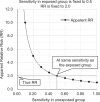Usefulness and caveats of real-world data for research on hypertension and its association with cardiovascular or renal disease in Japan
- PMID: 39261703
- PMCID: PMC11534704
- DOI: 10.1038/s41440-024-01875-5
Usefulness and caveats of real-world data for research on hypertension and its association with cardiovascular or renal disease in Japan
Abstract
The role of real-world data, collected from clinical practice rather than clinical trials, has become increasingly important for investigating real-life situations, such as treatment effects. In Japan, evidence on hypertension, cardiovascular diseases, and kidney diseases using real-world data is increasing. These studies are mainly based on "the insurer-based real-world data" collected as electronic records, including data from health check-ups and medical claims such as JMDC database, DeSC database, the Japan Health Insurance Association (JHIA) database, or National Databases of Health Insurance Claims and Specific Health Checkups (NDB). Based on the insurer-based real-world data, traditional but finely stratified associations between hypertension and cardiovascular or kidney diseases can be explored. The insurer-based real-world data are also useful for pharmacoepidemiological studies that capture the distribution and trends of drug prescriptions; combined with annual health check-up data, the effectiveness of drugs can also be examined. Despite the usefulness of insurer-based real-world data collected as electronic records from a wide range of populations, we must be cautious about several points, including issues regarding population uncertainty, the validity of cardiovascular outcomes, the accuracy of blood pressure, traceability, and biases, such as indication and immortal biases. While a large sample size is considered a strength of real-world data, we must keep in mind that it does not overcome the problem of systematic error. This review discusses the usefulness and pitfalls of insurer-based real-world data in Japan through recent examples of Japanese research on hypertension and its association with cardiovascular or kidney disease.
Keywords: Blood pressure; Cardiovascular diseases; Citizen science; Hypertension; Kidney diseases.
© 2024. The Author(s).
Conflict of interest statement
MS received academic support from Bayer Yakuhin Co., Ltd. HM concurrently holds the position of director of the Tohoku Institute for the Management of Blood Pressure, supported by Omron Healthcare Co., Ltd., and has received a research grant from JHIA. The authors have been provided with the databases by JHIA, JMDC, and DeSC Healthcare, Inc.
Figures





Similar articles
-
A retrospective, cross-sectional study of real-world values of cardiovascular risk factors using a healthcare database in Japan.BMC Cardiovasc Disord. 2014 Sep 17;14:120. doi: 10.1186/1471-2261-14-120. BMC Cardiovasc Disord. 2014. PMID: 25231128 Free PMC article.
-
Inventory of real-world data sources in Japan: Annual survey conducted by the Japanese Society for Pharmacoepidemiology Task Force.Pharmacoepidemiol Drug Saf. 2024 Jan;33(1):e5680. doi: 10.1002/pds.5680. Epub 2023 Aug 31. Pharmacoepidemiol Drug Saf. 2024. PMID: 37650434
-
Clinical research using real-world data: A narrative review.Respir Investig. 2024 Nov;62(6):929-934. doi: 10.1016/j.resinv.2024.08.002. Epub 2024 Aug 24. Respir Investig. 2024. PMID: 39182397 Review.
-
Use of National Database of Health Insurance Claims and Specific Health Checkups for examining practical utilization and safety signal of a drug to support regulatory assessment on postmarketing drug safety in Japan.Front Med (Lausanne). 2023 Feb 23;10:1096992. doi: 10.3389/fmed.2023.1096992. eCollection 2023. Front Med (Lausanne). 2023. PMID: 36910503 Free PMC article.
-
Stroke Research Using Administrative Claims Database in Japan: A Narrative Review.J Atheroscler Thromb. 2024 Oct 1;31(10):1341-1352. doi: 10.5551/jat.RV22022. Epub 2024 Aug 3. J Atheroscler Thromb. 2024. PMID: 39098041 Free PMC article. Review.
Cited by
-
Blood pressure control and treatment status at 1 year after the first health check-up in individuals with observed referral-level blood pressure.Hypertens Res. 2025 Jul 25. doi: 10.1038/s41440-025-02284-y. Online ahead of print. Hypertens Res. 2025. PMID: 40715802
-
Delayed treatment initiation as one of the crucial factors in clinical inertia: lessons from a real-world database research.Hypertens Res. 2025 Aug 5. doi: 10.1038/s41440-025-02320-x. Online ahead of print. Hypertens Res. 2025. PMID: 40764677 No abstract available.
References
-
- Okada M. Big data and real-world data-based medicine in the management of hypertension. Hypertens Res. 2021;44:147–53. - PubMed
-
- Tonegawa-Kuji R, Kanaoka K, Iwanaga Y. Current status of real-world big data research in the cardiovascular field in Japan. J Cardiol. 2023;81:307–15. - PubMed
-
- Food and Drug Administration (United States). “Framework for fda’s real-world evidence program,” 2018. https://www.fda.gov/media/120060/download. Accessed 12 Jul 2024.
Publication types
MeSH terms
LinkOut - more resources
Full Text Sources
Medical

